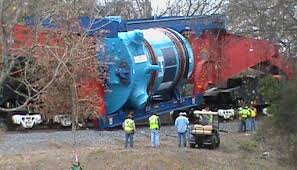Nuclear Power
Must-read in Forbes: Why the economics don’t favor nuclear power in America. Economist Mark Cooper makes compelling arguments that neither current reactor designs nor upcoming “small modular reactors” can be economically competitive with existing sources of electricity generation–even under scenarios that promote low-carbon technologies. Thus, while including nuclear power in our energy future might benefit the nuclear power industry, it would harm ratepayers and stem progress in developing the electric system of the 21st century. If you want to understand the countervailing pressure between the new economics of nuclear power and creation of a clean energy system, then you want to read this article.
Cooper writes, “The most important impact of the nuclear hypocrisy lies in the fact that nuclear utilities are wedded to the mid-20th century concept of massive base load facilities that require huge investments on which they can earn large profits. While they build and maintain electricity grids to serve the needs of those facilities, the decentralized, smaller scale generation technologies that have become less costly require a different approach, using intensive information and control technologies to manage the grid. Given the expense of nuclear power, a commitment to nuclear crowds out the alternatives. In the current context, it will slow or prevent that transition to a 21st century industrial structure.”
Cooper concludes, correctly: “The biggest mistake policy makers could make is to allow the search for yet another nuclear holy grail to delay the transition to a 21st century electricity grid.”

Following up on the radiation leak at the Department of Energy’s WIPP (Waste Isolation Pilot Project) transuranic radwaste dump in New Mexico, the DOE now acknowledges that it could be weeks before workers can safely access the WIPP site to determine the cause of radiation leaks, including plutonium, both inside the site and a half-mile away.
WIPP is one of New Mexico’s current nuclear problems (there are others, such as the Urenco uranium enrichment plant near Eunice), but the nuclear industry’s past haunts the state as well. The toxic legacy of uranium mining in New Mexico is an excellent piece from truthout.org that explores that past and its ongoing effects on the state. There currently are no active uranium mines or mills in New Mexico, but 450 closed mines and 8 former mills contaminated large portions of the state, especially on Navaho Nation lands, and the health effects continue.
Clean Energy
Northeast Utilities is attempting to block solar power development in Massachusetts because it fears the competition solar provides. This is, on a small scale, an exemplar of the battle over the future of electric power in the U.S.–and indeed the world. The next few years will see more and more battles like this, between utilities wedded to the 20th century model of large baseload power plants and big transmission lines controlled by the utilities and the 21st century reality of clean energy and distributed generation. Those utilities that embrace the new model ultimately will be the winners.
The battle between a clean, decentralized energy future and support for the old nuclear/fossil fuel system is even going on within utilities. In this article from CleanTechnica, an independent analyst describes that battle as a “civil war” within Duke Energy.
The Natural Resources Defense Council (NRDC) and the Edison Electric Institute (EEI) have issued a joint position paper that is stirring up some controversy in the renewable energy world. Briefly, the two groups are attempting to introduce a compromise position in the ongoing state-level battles over “net metering,” which the CleanTechnica article above describes, “gives rooftop solar customers full retail credit for the excess energy they deliver back to the grid. Utilities then sell this energy at the full retail rate to the neighbors, even though it doesn’t cost the utilities a dime to generate, transmit, or distribute that energy.” It does, however, cost the utilities money to build, upgrade and manage the electric grid. The utilities want solar rooftop owners to pay more of those costs; but their proposals typically have been designed to be so costly as to discourage rooftop solar entirely, rather than reflecting those actual costs. The question is whether the NRDC/EEI proposal meets the needs of solar development or whether it offers too much power to the utilities and passes too many costs onto solar power users. An article on the issue from Forbes is here. The joint position paper is available here. We would love comments from readers on how you view this proposal: is it a step in the right direction? A sell-out to utilities? something else? Comment and discuss above!
Michael Mariotte
Permalink: https://www.nirs.org/nuclear-newsreel-friday-february-21-2014/
Comments are welcome! Say your piece below. Start a discussion. Don’t be shy; this blog is for you.
Note: If you’d like to receive GreenWorld via e-mail daily, send your name and e-mail address to nirs@nirs.org and we’ll send you an invitation. Note that the invitation will come from a GreenWorld@wordpress.com address and not a nirs.org address, so watch for it.



